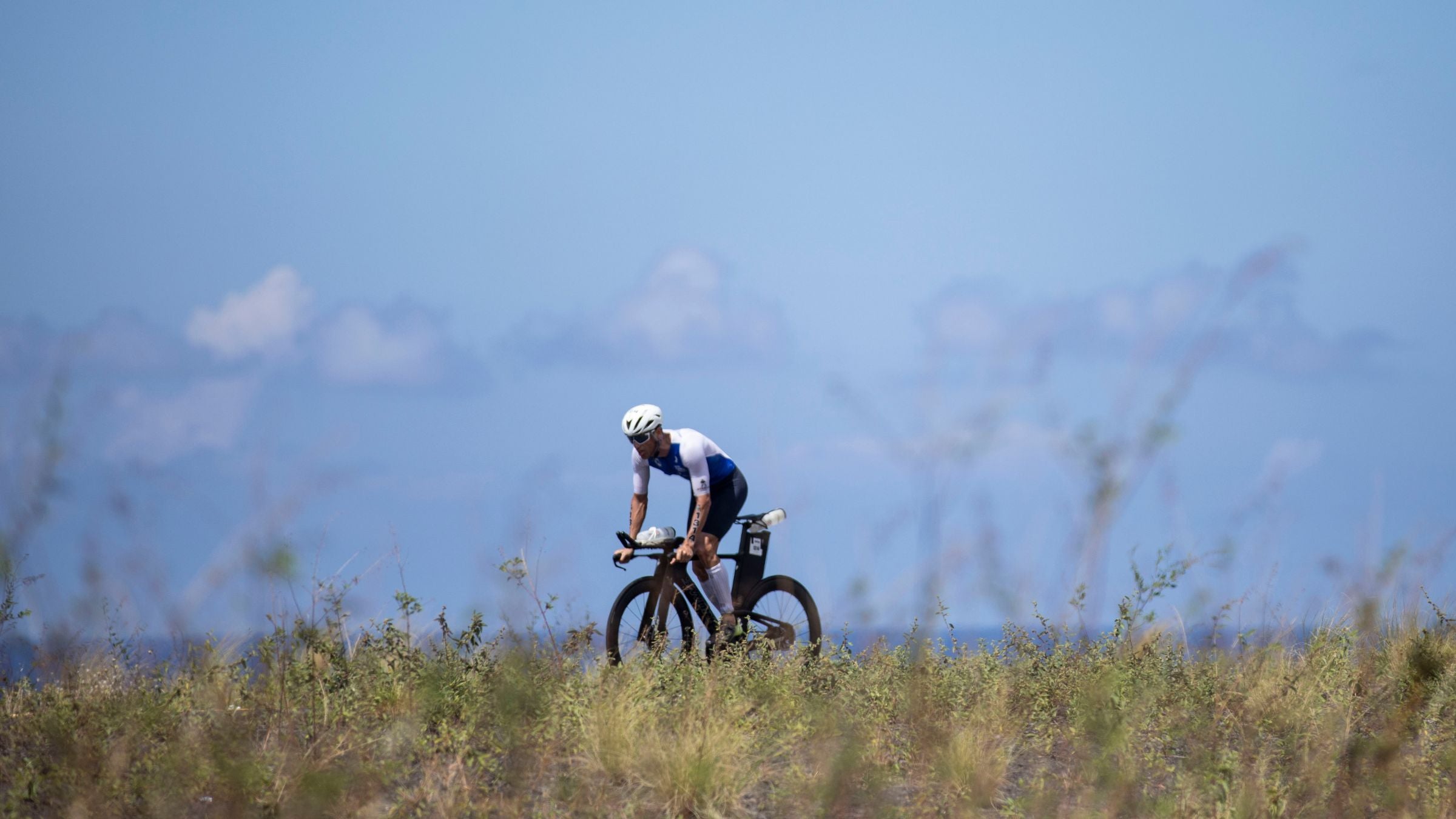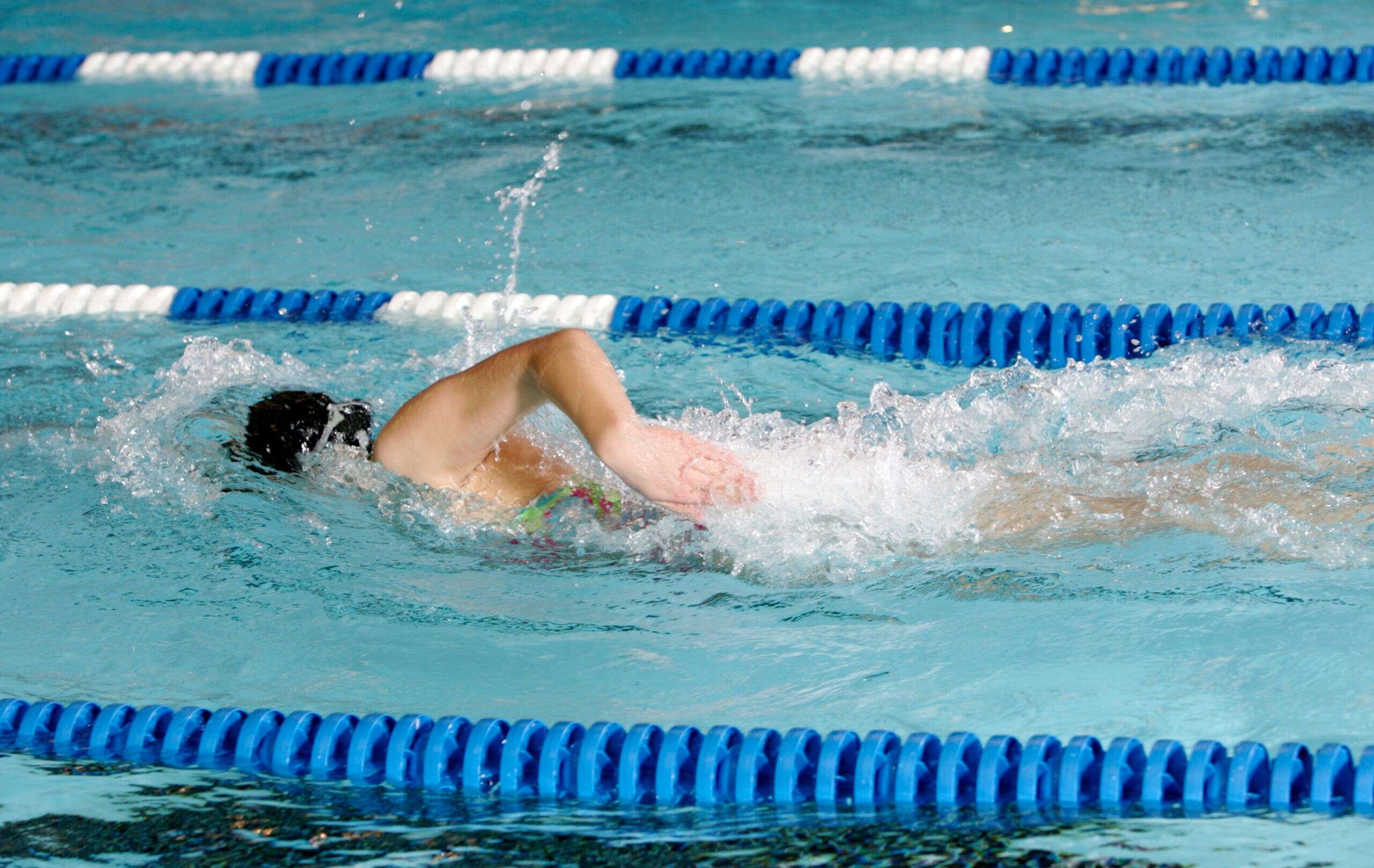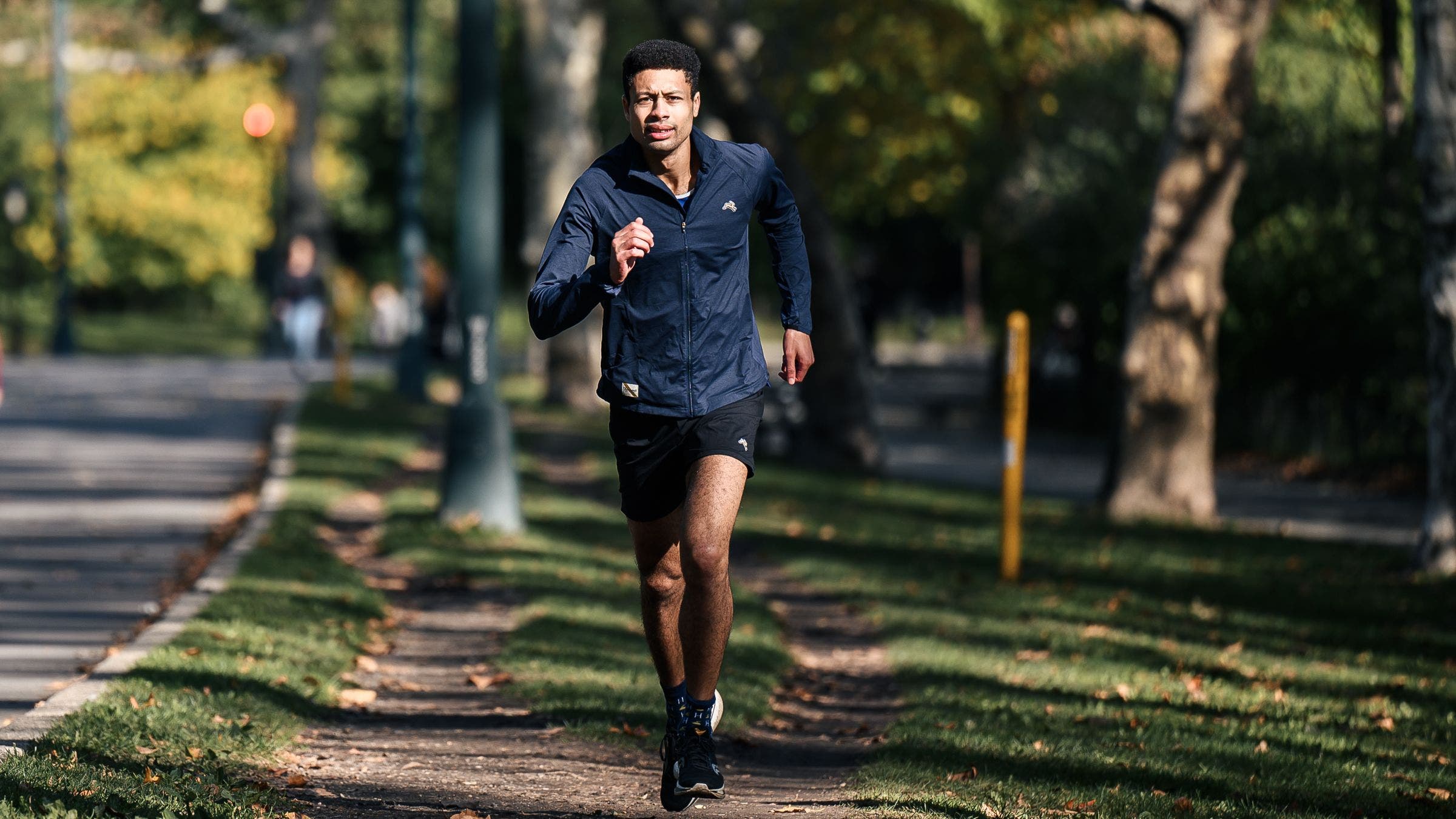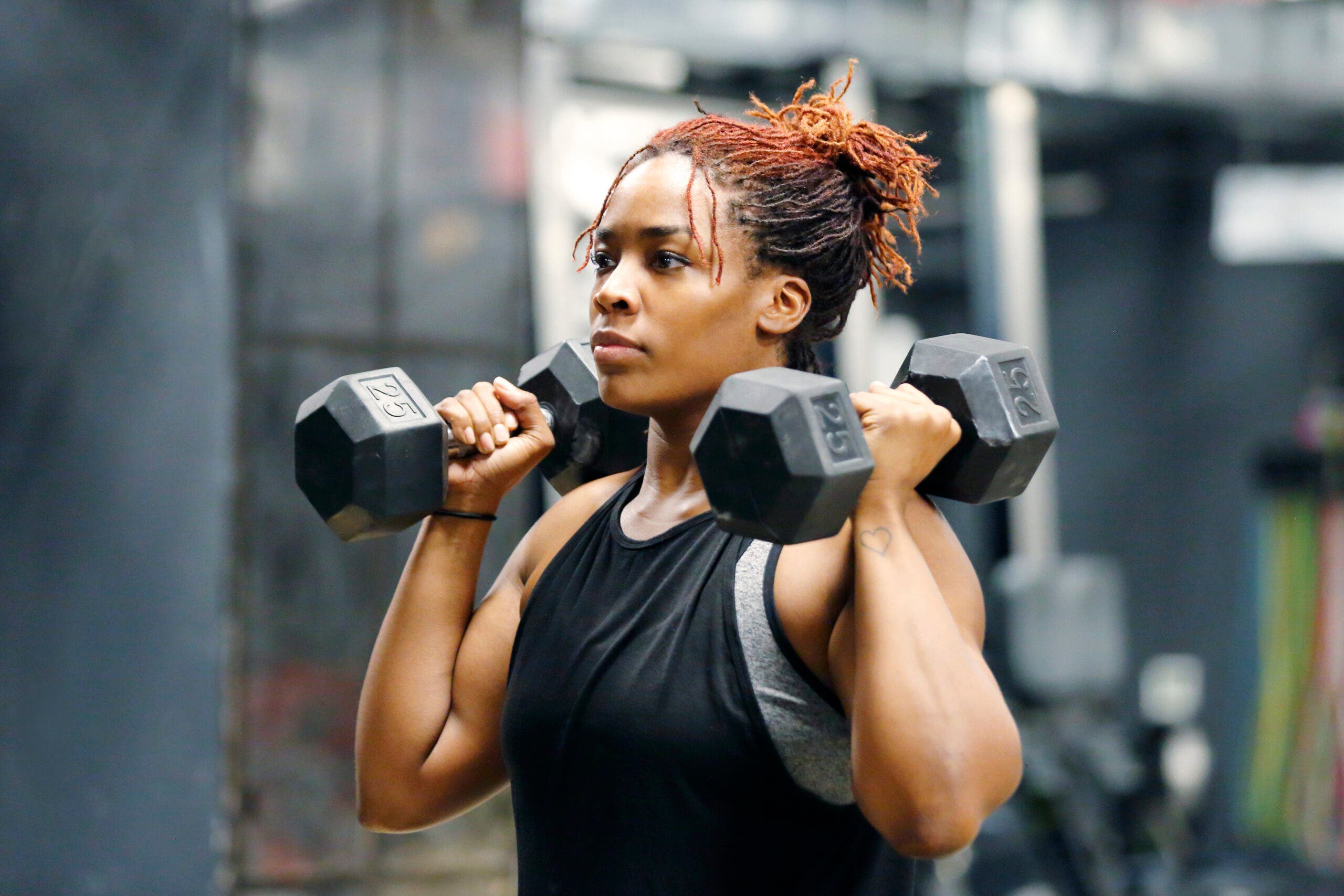A Three-Week Base Training Plan to Jumpstart Your Tri Season

(Photo: Danny Weiss/Triathlete)
Triathlon Base Training Plan Workouts
Spring has sprung, races are back, and it seems like every triathlete you follow on social media is talking about crushing their big workouts. If you’re feeling like you’re behind, don’t panic! A lot of triathletes struggle to get back into a regular training routine after winter. That’s why we’ve developed this three-week training plan to jumpstart your triathlon season.
The following program, designed to kick off your base training for the triathlon season ahead, is best for athletes who have been training 6+ hours a week already, but haven’t been super consistent or structured. However, if you’re starting from zero training, that’s OK, too – these workouts will be tough, but doable. This triathlon base training plan will help establish a rhythm and get in some key foundational volume, along with some activation work to get the body ready for bigger volume and higher volume weeks in the future. Additionally, some test sets in the third and final week will give you some good baseline values to properly set up your training zones for subsequent cycles of training.
RELATED: Training Plan: Returning to Swimming After a Break
When should I start this base triathlon training plan?
Ideally, this program would start at least 12 weeks prior to your first race of the season. That would give you 3 weeks of good training here, followed by a progression to a structured training plan designed for your race distance. It’s important to note that this 3 weeks alone won’t have you ready for the best race of your life. This particular training plan is intended to give you a jumpstart for upcoming training and races. A solid base training phase should be at least six weeks – ideally more, especially for long-course races. If you’re looking for the next step, check out one of these training plans by distance:
- 8-Week Sprint Triathlon Training Plan For Beginners
- Rock Your First Olympic Triathlon with This 16-Week Training Plan
- A 20-Week Training Plan for Your First 70.3 Triathlon
- Outside Learn: Your Best 70.3
- Super Simple 20 Week Ironman Training Plan
Your three-week base triathlon training plan
This program is a progressive build in the first two weeks, followed by a test week on week 3. Follow the time prescriptions as closely as possible. Being that this is progressive build, each session builds on past workouts, making it important to get in as much of the prescribed time each workout as possible. The specifics of each workout are important, but if your effort is compromised for some reason, focus first on getting in the fully prescribed time.
All workouts in this program are at an easy to moderate RPE. RPE is a subjective measure of effort that can be used in conjunction with, or independently of, other, more objective, measures of effort like heart rate, pace and power. Simply, RPE is a personal analysis of how hard an effort is. The most common scale to measure RPE is called the Borg scale, which ranks effort from 6 to 20, with 6 being “no effort at all” to 20 being maximal exertion. Until heart rate, pace and/or power zones are established in week 3, RPE is an a good way to both prescribe and assess effort.
It is very important to keep the effort light and aerobic – remember, the point of this plan is to get back to consistent training, not to try to hit your peak fitness from last year! The intensity of the work in this training plan will come from the back-to-back consistency, along with the volume of the workload. Although it doesn’t feel like a “hard” effort, this type of foundational work is critical to future success. The goal is to start building a nice foundation that you can continue to build and refine as the season progresses.
RELATED: Consistency is the Foundation of Triathlon Success

Triathlon Base Training Plan: Week 1
Monday:
Workout 1: Swim (50 minutes)
Warm-up:
100 swim easy
50 kick easy
100 swim moderate
50 kick build speed
100 swim build speed
Main set:
5 x 200 swim (:30 rest)
Kick 200 steady with fins
6 x 50 relaxed speed (:30 rest).
Cooldown:
200 choice
Workout 2: Strength (1 hour)
Follow the strength workout provided at the end of this article.
Tuesday:
Workout: Bike/Run Brick (1 hour, 20 minutes)
Bike: Spin Ups
Warm up for 20 minutes at RPE 6 to 10. Then do 8 x spin-ups, where you work toward a high cadence in a relatively easy gear. When you start bouncing in your seat, back off and recover with an easy ride for 2 minutes. Then repeat. Don’t push a big gear on the spin ups. This workout is to increase efficiency and cadence, not power. Cool down at RPE 6 to 8 for the duration.
Run: Off the Bike
After a quick transition (5 minutes or less), run 20 minutes off the bike. All aerobic and at an RPE of 8 to 12. Get your legs under you, and hold steady.
Wednesday:
Workout 1: Run (45 minutes)
Run for about 30 minutes at RPE 6 to 10. Then, run 8 x 20 second strides at RPE 14 to 16. Walk recovery between each stride (approximately 1 minute). Then, do the next stride. Focus on form and technique. These should be on a flat, firm surface. An out-and-back course works best. You shouldn’t start another stride until your breathing/heart rate has calmed down quite a bit. Count how many foot strikes you have during each stride: A good goal is 30 strikes for every 20-second stride.
Workout 2: Swim (50 minutes)
Warm-up:
6 x 100: Descend 1-3 and 4-6. #4 and #8 should be at RPE of 12.
Main set:
Odds are swim, evens are pull with buoy and paddles. All aerobic and at an RPE of 8 to 10:
100 swim (:30 rest)
200 pull (:20 rest)
300 swim (:30 rest)
400 pull (:60 rest)
300 swim (:30 rest)
200 pull (:20 rest)
100 swim
Cooldown:
200 easy, with a combination of swimming and kicking
Thursday:
Workout 1: Bike (45 minutes)
Very easy recovery spin at RPE 6 to 9. Light and easy on the pedals with a good cadence in the 80 RPM to 100 RPM range.
Workout 2: Strength (1 hour)
Follow the strength workout provided at the end of this article.
Friday:
Workout 1: Swim (55 minutes)
Warm-up:
Build effort on each rep starting at RPE 8 and building to RPE 12.
200 swim
100 kick
200 swim
100 kick
200 swim
Main set:
Each numbered set is done non-stop as a 200:
#1—100 easy (rpe 6 to 8), 50 mod (rpe 10 to 12), 50 fast (rpe 14 to 18) (20)
#2—50 easy, 100 mod, 50 fast (:20 rest)
#3—50 easy, 50 mod, 100 fast (:30 rest)
#4—100 fast, 50 easy, 50 mod (:20 rest)
#5—50 fast, 100 easy, 50 mod (:20 rest)
#6—50 fast, 50 easy, 100 mod
2 minutes rest
300 pull with buoy only. RPE 8 to 10 (aerobic and form-focused)
Cooldown:
100 easy kick
200 easy swim
Workout 2: Run (1 hour, 10 minutes)
Moderate distance run for 1:10:00, on flat to rolling terrain at RPE 6 to 12. Build into the run as it progresses. All aerobic work with good form. Pure base building. Be sure to get in the full time today.
Saturday:
Workout 1: Bike (2 hours)
Aerobic ride on flat to rolling terrain at RPE 6 to 12. It’s OK to spike the effort a bit into the RPE 12 range on hills or into big headwinds. Otherwise, smooth and steady riding. Pure base building.
Workout 2: Swim (40 minutes)
Warm-up:
400 choice
Main set:
8 x 50 drills for your technique limiter (:20 rest)
2 minutes rest
6 x 50 fast form at RPE 14 to 16 (:30 rest).
Cooldown:
400 easy, mix of swim and kick
Sunday
Rest day
Full rest or gentle cross-training: walk, hike, yoga class, etc.
RELATED: A Complete Guide to Triathlon Swimming

Triathlon Base Training Plan: Week 2
Monday:
Workout 1: Swim (1 hour)
Warm-up:
200 swim
200 pull with buoy and paddles
4 x 50 drill (:30 rest)
Main set:
4 x 300 (45) as:
1-2: Swim at RPE 8 to 12 with perfect form
3: Hypoxic/Alternate breathing; breathing every 3 strokes
4: Pull with buoy only at RPE 8 to 12 with perfect form
2 minutes rest
900 easy aerobic as:
200 free/100 backstroke or drill
Cooldown:
200 choice
Workout 2: Strength
Follow the strength workout provided at the end of this article.
Tuesday:
Workout: Bike/Run Brick (1 hour, 55 minutes)
Bike: Microbursts
Warm up for 30 minutes at RPE 6 to 10. Then begin three 10-minute microburst intervals, with power continuously switching from 15 seconds “on” (RPE 12 to 16) to 15 seconds “off” (RPE 6 to 10). Repeat continuously for the entire 10 minutes. 5-minute recovery at RPE 6 to 8 between intervals. 15 minutes cool down.
Run: Off the Bike
After a quick transition (5 minutes or less), run 25 minutes off the bike. All aerobic and at an RPE of 8 to 12. Get your legs under you and hold steady.
RELATED: Get to Know the Brick Workout
Wednesday:
Workout 1: Run (50 minutes)
Moderate run at RPE 6 to 12. Near the end, do 6 x 200 meter strides where you build from slow to fast within each one. RPE should be reaching 16 or so by the end of each 200. 200 jog recovery between each. Allow for 5 minutes of cool down at RPE 6 to 8 after the last one.
Workout 2: Swim (50 minutes)
Warm-up:
200 easy
4 x 50 build within each from slow to fast (RPE 6 to 16) (:20 rest)
Main set:
9 x 100 as:
1 aerobic at rep 6 to 8/1 build from RPE 8 to 12/1 fast at RPE 12 to 14 (:20 rest)
1 minute rest
4 x 200 as:
2 x technique/drill, 2 x pull with buoy and paddles (:30 rest)
1 minute rest
8 x 25 fast with perfect form (:45 rest)
Cooldown:
200 Choice
Thursday:
Workout 1: Bike (1 hour)
Very easy recovery spin at RPE 6 to 9. Light and easy on the pedals with a good cadence in the 80 RPM to 100 RPM range.
Workout 2: Strength (1 hour)
Follow the strength workout provided at the end of this article.
Friday:
Workout 1: Swim
Warm-up:
300 easy
100 kick
200 pull with buoy only
4 x 50 drill (:30 rest)
Main set:
4 x 200 at RPE 8 to 10 (:15 rest)
1 minute rest
4 x 150 at RPE 10 to 12 (:15 rest)
1 minute rest
4 x 100 at RPE 14 to 16 (:15 rest)
1 minute rest
4 x 50 at RPE 16 to 18 (:30 rest)
Cooldown:
200 choice
Workout 2: Run (1 hour, 20 minutes)
Aerobic run for 1:20:00 at RPE 8 to 12 on rolling terrain. Don’t be afraid to get into some hills today. Allow heart rate to gradually rise as the run progresses, but don’t force it up. Keep it aerobic! Focus on good form and a quick cadence of around 90-foot strikes (per foot) per minute.
Saturday:
Workout 1: Bike (2 hours, 30 minutes)
1:30 ride on flat to rolling terrain at RPE 6 to 12. Then, do 6 x 2 min (1 min “on”(RPE 14 and 110 cadence), 1 min “off” (RPE 8 to 10 and normal cadence of 80 to 90 rpm), 10 minutes spin, 2 x 5 minutes (with 5 minute recovery interval at RPE of 8 to 10) at 100 rpm and an RPE of 12) , then 2 x 2 minutes (1 min “on”, 1 min “off”) just like the first set. Cool down at RPE 6 to 8 for the duration.
Workout 2: Swim (45 minutes)
Warm-up:
600 choice
Main set:
8 x 50 drills for your technique limiter (:20 rest)
2 minutes rest
6 x 50 fast form at RPE 14 to 16 (:30 rest).
Cooldown:
500 easy, mix of swim and kick
Sunday:
Rest day
Full rest or gentle cross-training: walk, hike, yoga class, etc.

Triathlon Base Training Plan: Week 3 (Test Week)
Monday:
Workout 1: Swim (45 minutes)
Warm-up:
200 swim
100 kick
200 pull with buoy and paddles
4 x 50 drill (:30 rest)
Main set:
6 x 150 at RPE 8 to 10 (:10 rest)
1 minute rest
6 x 75 at RPE 10 to 12 (:10 rest)
1 minute rest
4 x 25 at RPE 14 to 18 (:30 rest)
50 kick easy
Cooldown:
200 choice
Workout 2: Strength (1 hour)
Follow the strength workout provided at the end of this article.
Tuesday:
Workout: Bike/Run Brick (1 hour 30 minutes)
Bike: Sprints
Aerobic Ride (RPE 6 to 12) for 1:15:00. At the 35-minute mark, do 8 x 10 second sprints at RPE 16 to 18. Push HARD on the pedals. Practice good from and spinning the gear up. This can be seated or standing, whichever suits you best. 3:50 recovery at RPE 6 to 8 after each sprint. Spin down for the duration.
Run: Off the Bike
After a quick transition (5 minutes or less), run 15 minutes off the bike. All aerobic and at an RPE of 8 to 12. Get your legs under you and hold steady.
Wednesday:
Workout 1: Swim (45 minutes)
Complete the swim test set at the end of this article.
Thursday:
Workout: Bike (45 minutes)
Very easy recovery spin at RPE 6 to 9. Light and easy on the pedals with a good cadence in the 80 rpm to 100 rpm range. Take it really easy.
Workout 2: Strength (1:00)
Follow the strength workout provided at the end of this article.
Friday:
Workout 1: Run (45 minutes)
Complete the run test set at the end of this article
Workout 2: Swim: (1 hour, 5 minutes)
Warm-up:
400 choice
Main set:
3 x 800 (:60 rest) as:
1: Swim at RPE 8 to 10. Form focused.
2: Pull with band and buoy at RPE 8 to 12.
3: Pull with paddles and buoy as 150 at RPE 8 to 10/50 at RPE 12 to 14.
4 x2 5 fast at RPE 16 to 18 (:45 rest)
Cooldown:
200 Choice
Saturday:
Workout 1: Bike (1 hour, 3o minutes)
Complete the bike test set at the end of this article.
Workout 2: Swim (40 minutes)
Warm-up:
400 choice
Main Set:
8 x 50 drills for your technique limiter (:20 rest)
2 minutes rest
6 x 50 fast form at RPE 14 to 16 (:30 rest).
Cooldown:
400 easy, mix of swim and kick
Sunday:
Rest Day
Full rest or gentle cross-training: walk, hike, yoga class, etc.

Triathlon Base Training Plan: Strength Training Workout (1 hour)
Perform 3 sets of 20 reps on each of the below moves. Err on the conservative side with the amount of weight used. By the last rep of the last set of each exercise, you should be fatigued, but far from failure. The big goal here is get some strength established in the program and to have you ready for heavier lifting sessions in subsequent weeks. Avoid muscle soreness by keeping your weights lighter, with a focus on proper form and good range of motion.
RELATED: Why Strength Training is Important for Endurance Athletes
Warm up:
5 minutes on exercise bike or treadmill
Main Set:
Perform each superset below. In other words, Start with the exercises in set 1, alternate between the leg and arm exercise for 3 full sets, then move to the next set of exercises until you make your way through the entire program.
Superset 1: Lunges and Shoulder Shrugs
- Lunges should be with dumbbells in each hand at the side of the body.
- Shoulder shrugs should be with dumbbell in each hand at the side of the body.
Superset 2: Leg Press and Bicep Curls
- Find a good leg press machine. If you are proficient with squats, they can be substituted for the leg press.
- Bicep curls with dumbbell weights
Superset 3: Deadlift and Roman Chair
- Standard deadlift
- Roman Chair with weights or straight leg (30 reps in all cycles of training)
Superset 4: Seated Hamstring Curl and Lat Pulldown
- Seated as opposed to lying down on hamstring curls (if available)
- Lat pull down grip should be wide.
Superset 5: Abduction/Adduction (Legs) and Abdominals
-
- Ab/Ad can be on any type of machine.
- Pick your favorite type/set for the abdominals.
Cooldown:
5 minutes on exercise bike or treadmill.

Triathlon Base Training Plan: Test Sets
The goal of the test sets is to establish zones that you can use for future training sessions. Whether you use power, heart rate of pace, these should have you set up nicely to create zones for future weeks of training. For more on this, check out The Complete Guide To Setting Your Triathlon Training Zones.
The tests below are to be performed during the latter half of the third week of this triathlon base training plan. This allows for a bit of recovery from the previous 2 weeks of training prior to attempting these swim, bike and run test efforts. Each test is a solid effort, so be rested and ready for each.
Swim test set:
The following swim test establish threshold pace in the pool. Threshold pace is a great base to plan all of the upcoming swim workouts.
Warm up:
200 easy swim (:30 rest)
200 of 25 choice drill/25 free (:30 rest)
200 descend each 50yd from slow to 1000 TT effort (:30 rest)
100 easy (:30 rest)
4 x 50 with 25 fast/25 easy (:20 rest)
2 minutes rest
Test Set:
200 all out from a push start
1 minute rest
1000 all out from a push start
Record times for each
Cooldown:
200 very easy
You can now set up swim pace training zones based on the average pace per 100 that you held for the 1000. To create the zones, use the following chart:
If you are a less-advanced swimmer and a 1000 feels too long, instead do a 100/500 test using the protocol above and calculate zones the same, only using the average pace per 100 for your 500 time, instead of the 1000. Future swim workouts can then be planned in relation to your previous average pace per 100.
| Swim Threshold Pace | |
| Zone 1: Aerobic/Recovery | +30 seconds and slower per 100 |
| Zone 2: Endurance | +15 to +29 seconds per 100 |
| Zone 3: Intensive Endurance | +7 to +14 per 100 |
| Zone 4: Sub-Threshold | ?1 to ?6 per 100 |
| Zone 5: | a: Threshold (0 to -3 seconds per 100) b: Anaerobic Endurance (-4 to -10 seconds per 100) c: Power (-11 and faster per 100) |
Bike test set:
If you have a power meter, great! Use this test to establish your functional threshold power (FTP). Technically, this is the amount of power that you can average for 60 minutes. The first 5-minute segment needs to be hard, and serves to fatigue the body before the main 20-minute test.
Warm-up:
30 minutes easy, building to moderate
5 minutes all-out
5 minutes easy
Test set:
20 minute time trial (choose a pace/power that you feel like you can hold for the entire 20 minutes)
Cooldown:
30 minutes easy
To determine FTP, take your average power from the 20-minute test and multiply that by 95%. That gives you your current FTP, and will help establish the following zones:
| Bike FTP Zones | |
| Zone 1: Active Recovery | <55% FTP |
| Zone 2: Endurance | 56-75% FTP |
| Zone 3: Tempo | 76-90% FTP |
| Zone 4: Lactate Threshold | 90-105% FTP |
| Zone 5 VO2 Max | 106-120% FTP |
| Zone 6: Anaerobic Capacity | 121-150% FTP |
| Zone 7: Neromuscular Power | >151% FTP |
No power meter? No problem! Threshold zones based on heart rate can be established with the following test:
Warm-up:
20 minutes easy, building to moderate
Test set:
30 minutes all out. Pace yourself, but do push as hard as you can for the full 30 minutes. At the 10-minute mark of the 30 minute time trial, push the lap button on your watch and capture the heart rate for the last 20 minutes of the 30-minute trial.
Cooldown:
10 minutes easy
The number you captured from the 20 minutes of the test set is normally at or just under your lactate threshold heart rate (LTHR). You can then use that number to establish zones as follows:
| Bike LTHR Zones | |
| Zone 1: Aerobic/Recovery | <81% LTHR |
| Zone 2: Endurance | 81-89% LTHR |
| Zone 3: Intensive Endurance | 90-93% LTHR |
| Zone 4: Sub-Threshold | 94-99% LTHR |
| Zone 5: | a. Threshold: 100-102% LTHR b. Anaerobic Endurance: 103-106% LTHR c. Power: >106% LTHR |
Run test set:
This run test helps establish run heart rate zones. It’s a simple test, but takes concentration to execute well. The test:
Warm up:
20 minutes, low to moderate effort with 4 x strides.
Test set:
Run 1 mile (on a track is preferred, but you can also do this on flat, uninterrupted terrain), gradually building effort. The first segment should be light, and you should build to a faster pace so that by the end of the mile you are running at a hard, but not all out, effort. Be careful not to start and build gradually!
Continue for 400 more meters where you increase pace every 100 meters, ending the last 100 meters at an all-out pace. Push as hard as you can. Record highest heart rate observed.
Cooldown:
10 minutes, very easy
You can then set up run training zones based on the observed max heart rate number during this set. To create your heart rate zones, use the following chart:
| Run Heart Rate Zones | |
| Zone 1: Aerobic/Recovery | <73% max heart rate |
| Zone 2: Endurance | 74-79% max heart rate |
| Zone 3: Intensive Endurance | 80-83% max heart rate |
| Zone 4: Sub Threshold | 84-89% max heart rate |
| Zone 5: | a. Threshold: 90-93% max heart rate b. Anaerobic Endurance: 94-97% max heart rate c. Power: 98-100% max heart rate |
Now that you have jump-started your training with this three-week base triathlon training plan, stay the course and keep tabs on your progress! I recommend using these test sets for swim, bike and run every 6 to 8 weeks to reestablish and update zones. This will help you to ensure that you are training at the proper levels of intensity.